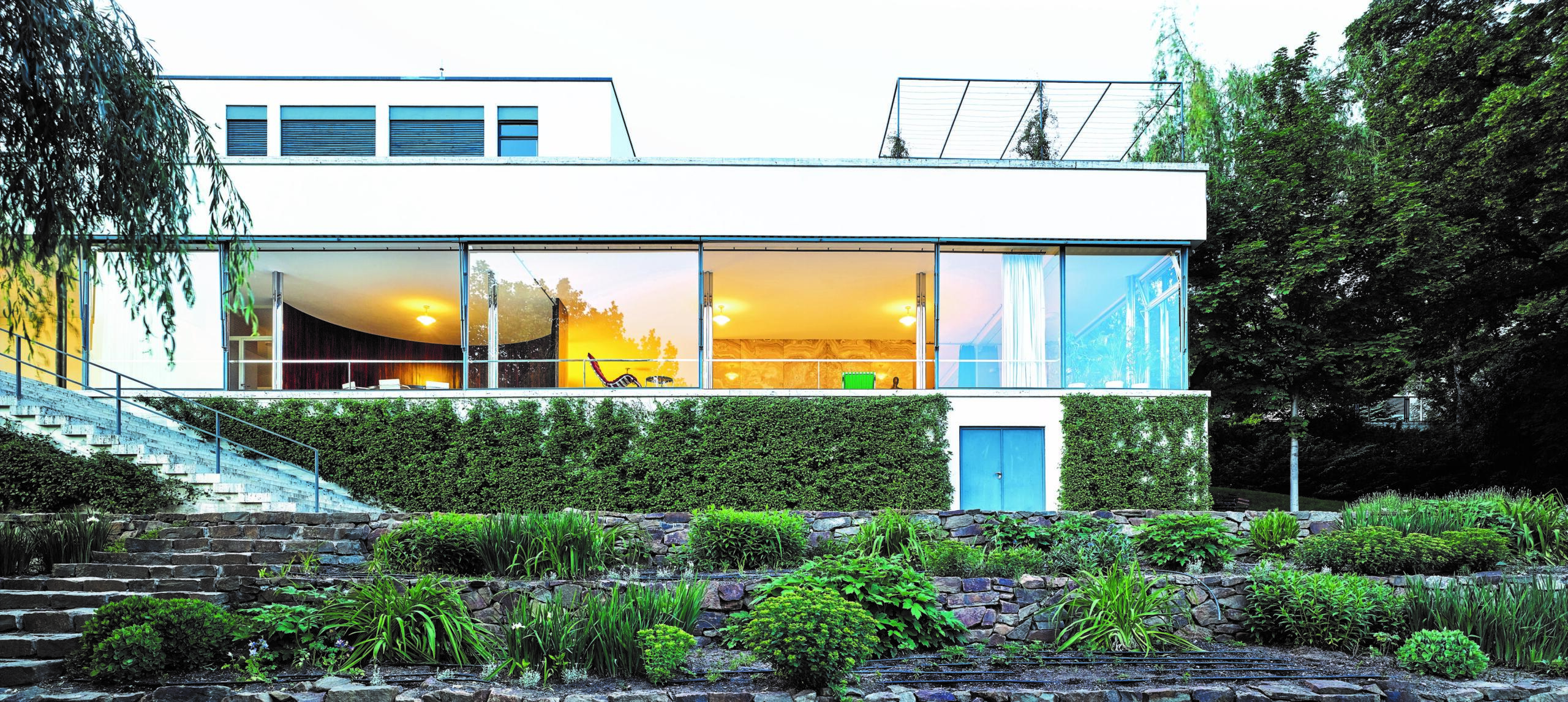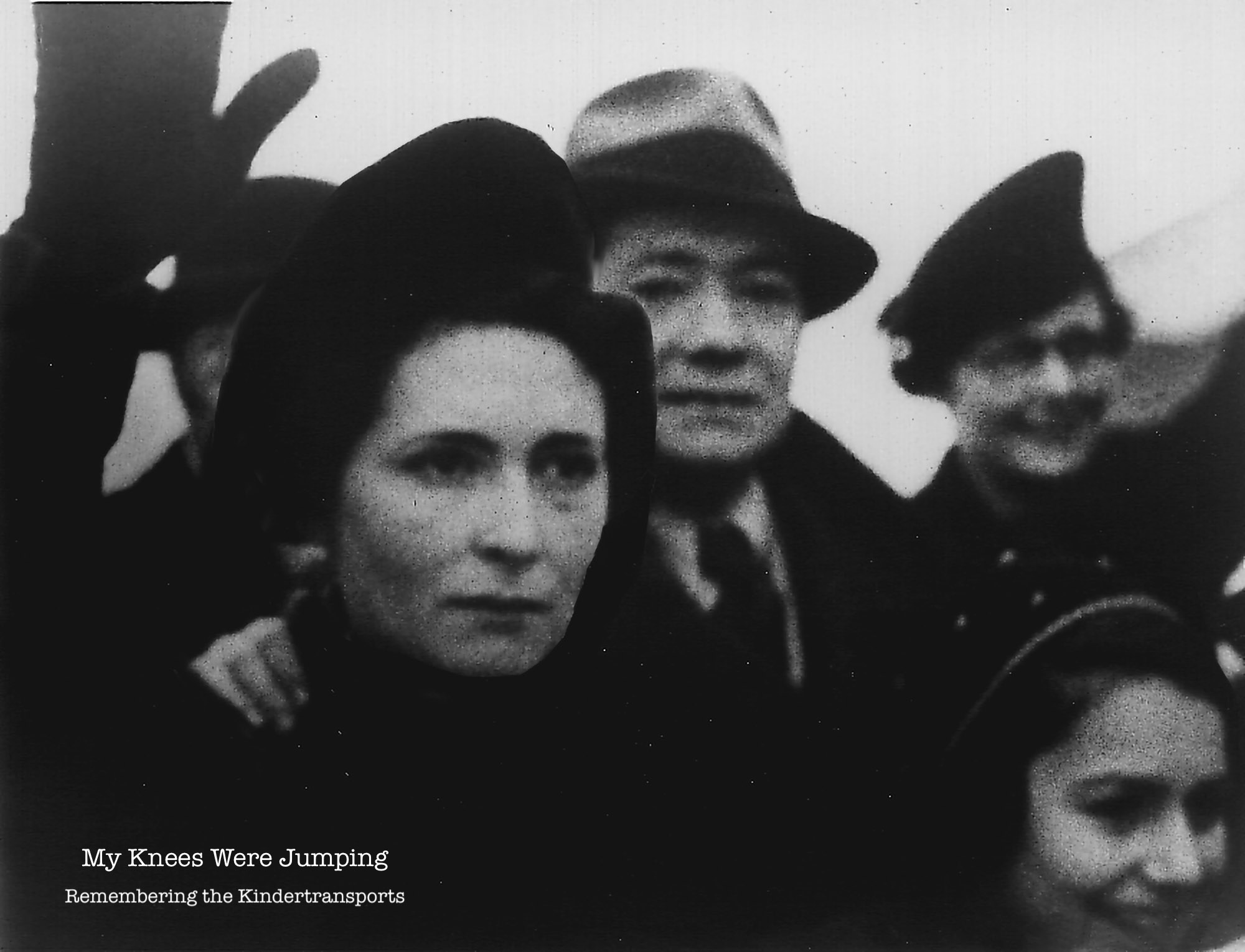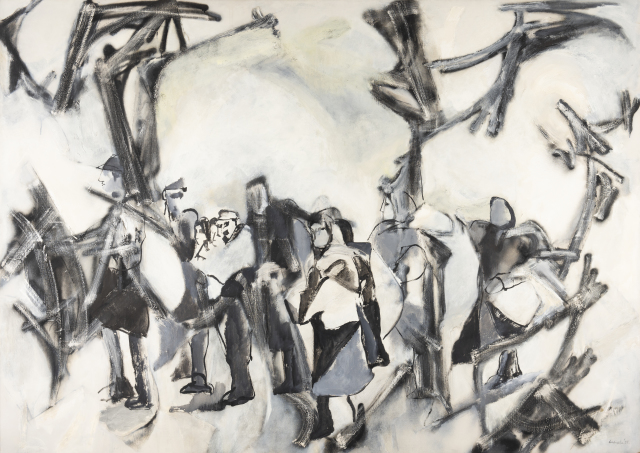Holocaust
-
-

World Premiere: Kafka’s Last Trial
Marlene Meyerson JCC Manhattan 334 Amsterdam Ave, New York, NY, United States
Screening at Marlene Meyerson JCC ManhattanScreening followed by Q+A with director Eliran Peled, writer Daphne Merkin, and author Benjamin Balint. Film and screening offered in partnership with the New York Jewish Week. Co-sponsored by Fritz Ascher Society for Persecuted, Ostracized and Banned Art. Upon his death in 1924, the great Czech-Austrian novelist Franz Kafka left behind a rich collection of unpublished manuscripts, with instructions to his friend Max Brod to burn them all. Thanks to Brod’s failure to fulfill Kafka’s wishes, the world has come to know one of the great writers of the 20th century. Now, 100 years after his death, the film “Kafka’s Last Trial” tells the story of this altruistic betrayal and the multi-generational effort to preserve Kafka’s literary legacy. Based on [...]
$36.00 -

Behind the Glass: The Villa Tugendhat and Its Family
ONLINE VA, United States
A book talk by Michael Lambek, Toronto (Canada)In this book talk, Michael Lambek follows the intertwined history of Mies van der Rohe’s iconic Villa Tugendhat and the family who inhabited it from 1930-1938. Part memoir, part social history, the book traces the family from its origins in a Jewish ghetto to the present day, focussing on the author’s maternal grandmother, Grete Tugendhat who commissioned and championed the house, which is now a World Heritage Site in Brno, Czechia. Image above: Ludwig Mies van der Rohe, Villa Tugendhat, Brno (Czechia), photo David Zidlicky The Villa Tugendhat, designed by Mies van der Rohe in 1929, is an icon of architectural modernism in Brno, Czechia. It was also a family home. [...]
Free -
-

SURVIVAL AND INTIMATIONS OF IMMORTALITY:
Oregon Jewish Museum and Center for Holocaust Education 724 NW Davis St, Portland, OR, United States
The Arts of Alice Lok Cahana, Rabbi Ronnie Cahana and Kitra Cahana
Oregon Jewish Museum and Center for Holocaust Education, Portland, OregonSurvival and Intimations of Immortality: The Art of Alice Lok Cahana, Rabbi Ronnie Cahana, and Kitra Cahana is a unique and powerful exhibition that explores the role of art and creativity, bringing the past into the present by focusing on three generations of artists from the same family. Alice Lok Cahana (1929-2017) was a Holocaust survivor who pledged she would become an artist if she survived the war. Rabbi Ronnie Cahana, Alice’s oldest son, is a poet and survivor of a major stroke. Kitra Cahana, Ronnie’s daughter, is a filmmaker and photographer. This exhibition reveals how the tragedy of the Holocaust impacted multiple generations of a family and how each member transformed the destructive trauma of the Shoah into [...]
$10.00 -

Opening reception
Oregon Jewish Museum and Center for Holocaust Education 724 NW Davis St, Portland, OR, United States
SURVIVAL AND INTIMATIONS OF IMMORTALITY:
The Arts of Alice Lok Cahana, Rabbi Ronnie Cahana and Kitra Cahana
Oregon Jewish Museum and Center for Holocaust Education, Portland, OregonPlease join us for the opening event! Survival and Intimations of Immortality: The Art of Alice Lok Cahana, Rabbi Ronnie Cahana, and Kitra Cahana is a unique and powerful exhibition that explores the role of art and creativity, bringing the past into the present by focusing on three generations of artists from the same family. Alice Lok Cahana (1929-2017) was a Holocaust survivor who pledged she would become an artist if she survived the war. Rabbi Ronnie Cahana, Alice’s oldest son, is a poet and survivor of a major stroke. Kitra Cahana, Ronnie’s daughter, is a filmmaker and photographer. This exhibition reveals how the tragedy of the Holocaust impacted multiple generations of a family and how each member transformed [...]
-
-
The Return from the Other Planet, 2023
Marlene Meyerson JCC Manhattan 334 Amsterdam Ave, New York, NY, United States
Screening followed by Q+A with director Assaf Lapid
Marlene Meyerson JCC Manhattan, New YorkKa.tzetnik, the Holocaust author who sold millions of copies and shaped its memory in Israel, was and remains an enigma. He remained elusive as rumors spread, claiming that he wrote all night long, in complete solitude, wearing his prisoner uniform from Auschwitz and burning his manuscripts by morning. During the explosive Eichmann trial, Ka.tzetnik was forced to reveal his identity to the public as he was summoned to testify. In a short testimony of a few minutes, he coined the term "The Other Planet" in describing Auschwitz, and fainted. The film explores the Ka.tzetnik enigma, shedding light on the person behind the myth, and brings back a chapter in his life that wasn't discussed much—his personal odyssey in coping [...]
$18.00 -

Plunderer. The Life and Time of a Nazi Art Thief
Marlene Meyerson JCC Manhattan 334 Amsterdam Ave, New York, NY, United States
Screening followed by Q+A with producer John Friedman
Marlene Meyerson JCC Manhattan, New YorkHermann Goering’s art dealer, Bruno Lohse, prospered by selling stolen art for decades after WWII, while Jewish families struggled to regain their paintings and memories. Captured and interrogated by the Monuments Men after the war, he served a brief prison sentence. After his release, he dealt profitably in stolen art for sixty years after the war, selling to collectors, galleries, and major museums. Highlighting stories of Holocaust survivors working to reclaim their families' lost artworks, Plunderer reveals the failures of post-war justice and the continuing complicity of governments and the art trade. Screening followed by Q+A with producer John Friedman. In partnership with The Fritz Ascher Society for Persecuted, Ostracized and Banned Art. Director: Hugo Macgregor Year: 2024 Runtime: [...]
$18.00 -

Signs and Wonders. Author Melvin Jules Bukiet in Conversation with Artist David Stern
ONLINE VA, United StatesThis presentation starts with Bukiet reading an excerpt from a novel he is currently working on, followed by an inspiring discussion with Stern about the daily reality and nature of being a writer. They continue with a broader conversation about the arts and their relationship to reality. As they delve into his books, they explore the direct or indirect presence of the Holocaust in his works and the way it still shakes the foundation of our civilization. Melvin Jules Bukiet has published eleven books, including After, Signs and Wonders and Strange Fire. His fiction has appeared in the Paris Review and other magazines, his non-fiction in the American Scholar and other magazines. He [...]
Free -
-

Survival and Intimations of Immortality:
ONLINE VA, United States
Artist and Curator TalkJoin curator Ori Z Soltes, Rabbi Ronnie Cahana, and Kitra Cahana for a conversation about Survival and Intimations of Immortality: The Art of Alice Lok Cahana, Rabbi Ronnie Cahana, and Kitra Cahana. Image above: Alice Lok Cahana, 1940-44 Triptych: left panel, 1984. Collection Ronnie and Michael Cahana, Inv. 052 This unique and powerful exhibition at the Oregon Jewish Museum and Center for Holocaust Education explores the role of art and creativity, bringing the past into the present by focusing on three generations of artists from the same family. The artists and curatorial team will share their insights about the work in the exhibition, how the show was made, and the impact it had, and share [...]
$5.00 -
-

Ruth Morley and Lore Segal, Kindertransport Survivor Artists on Film
ONLINE VA, United States
Film Screening and Conversation with Director Melissa HackerJoin film director Melissa Hacker in conversation with Rachel Stern about My Knees Were Jumping; Remembering the Kindertransports. In the nine months just prior to World War II close to 10,000 children were sent, without their parents, to the United Kingdom from Nazi Germany, Austria, Czechoslovakia and Poland. These children were rescued by the Kindertransport movement. Most of the children never saw their parents again. Those courageous parents who had the strength to send their children off to an unknown fate soon boarded transports taking them to concentration camps. The story of the Kindertransports is an extraordinary piece of history - untold far too long. The children who lived the trauma and terror of being uprooted from secure homes tell [...]
Free -
-

Confronting the Holocaust in Midcentury American Art
ONLINE VA, United States
Presentation by Jennifer McComas, Bloomington (Indiana)The Holocaust’s profound impact on midcentury American art has been underrecognized and understudied. Jennifer McComas, curator of the current exhibition Remembrance and Renewal: American Artists and the Holocaust, 1940-1970 at Indiana University’s Eskenazi Museum of Art and primary author of the accompanying catalogue, explores the ways that American artists—American-born, immigrants, refugees from Nazi-occupied Europe, and Holocaust survivors—confronted the Holocaust in their work during the war and in the decades just after. Image above: Anna Walinska (American, born England, 1906-1997), Survivors – Exodus, 1958. Oil on canvas, 60 x 84 in. (152.4 x 213.4 cm). Gift of Rosina Rubin, Eskenazi Museum of Art, Indiana University, 2023.29. © Atelier Anna Walinska. Photo: Shanti Knight. [...]
Free


